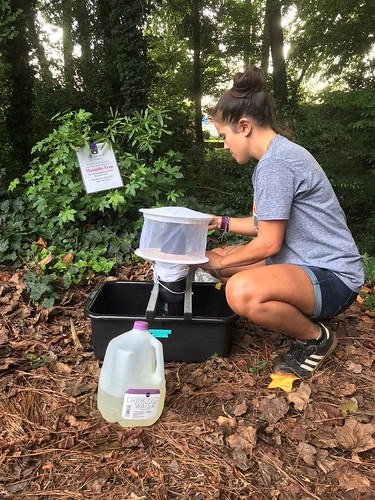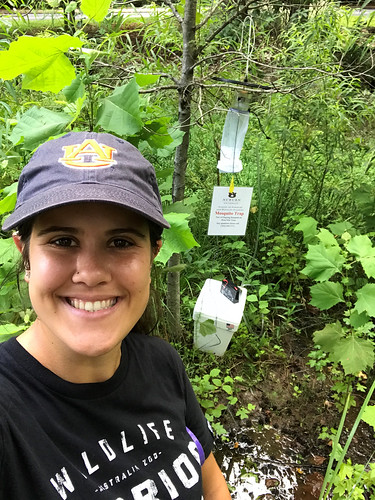Auburn University and Atlanta Audubon Society team up to study West Nile virus risk
Article body
Auburn University researchers and Atlanta Audubon Society volunteers studied birds and mosquitoes at 30 sites this summer in and around Atlanta—finding that the presence of West Nile virus is influenced by an area’s type of trees, variety of birds and size of forest patches.
“If you increase the forested areas, especially with pine trees, more non-carrier birds will inhabit the area, which will lower the probability of a mosquito biting an infected bird,” said Graeme Lockaby, associate dean for research in Auburn’s School of Forestry and Wildlife Sciences.
The researchers found:
-
Larger forested areas of 80 to 140 acres have less West Nile virus risk because more non-carrier birds are present.
-
Corvids, birds that carry West Nile virus, are the most prevalent type of birds inhabiting small forest patches, thus those areas have higher West Nile virus risk. A small forest patch is considered approximately 5 to 20 acres.
-
The number of adult mosquitoes declines as the percentage of pine trees increases in forests.
The Culex species mosquito is the primary mosquito carrier of West Nile virus. When it bites an infected bird, the mosquito becomes infected and transmits the virus to its next bite victims, including humans.
“Birds that carry the virus are primarily of the Corvidae species such as crows, ravens, jays and nutcrackers,” Lockaby said. “They prefer open areas with scattered tree cover, but birds that don’t carry the disease are more likely to inhabit forested areas.”
The research builds upon a 2016 Auburn study in Atlanta that showed West Nile virus is lower among forested areas with pine trees.
“Our goal is to develop a more accurate risk-prediction system to determine which neighborhoods are at higher risk,” said Lockaby. “The information we gathered could help in the allotment of resources to battle West Nile virus, like pesticides for mosquitoes and other preventative actions.”
Audubon volunteers documented the variety of bird species at the sites, not only visually but also by identifying birds by their sounds. They recorded the locations in database using GIS and GPS coordinates.
“Atlanta Audubon is thrilled to be partnering with Dr. Lockaby and others from Auburn University. Atlanta is known as the City in a Forest so learning more about the role of our tree canopy on bird diversity, ecosystem health and human health are of the utmost importance,” said Adam Betuel, Atlanta Audubon Society.
Lockaby headed the study with graduate student Nicole Castaneda in conjunction with the Atlanta Audubon Society and U.S. Forest Service. Castaneda studied the bird species diversity data gathered by the Audubon volunteers as well as soil wetness, the age and species of trees and socioeconomic factors at the mosquito sampling sites.
“It is important we understand all factors that influence the presence of corvid birds that infect mosquitoes, and to know what areas are ideal breeding grounds for the Culex mosquitoes which transmit the disease to other species,” Castaneda said.
The CDC recommends that people should try to avoid being bitten by mosquitoes by wearing long sleeves and using insect repellent that contains DEET, picaridin, IR3535 and para-menthane-diol, or PMD. People should also remove containers with standing water where mosquitoes can breed.
Related Media
Media interested in this story can contact Communications Director Preston Sparks at (334) 844-9999 or preston.sparks@auburn.edu.
The Auburn University College of Forestry, Wildlife and Environment is a flagship institution for natural resources-based degrees including natural resource management, geospatial and environmental informatics and sustainable biomaterials and packaging. The school serves as the backbone for Alabama’s $30 billion+ forest, wildlife and natural resources related enterprises. Its mission is to create next-generation professionals and leaders, to develop new knowledge and disseminate science-based solutions to our clientele to improve the social, economic and environmental well-being of citizens in Alabama and beyond.







